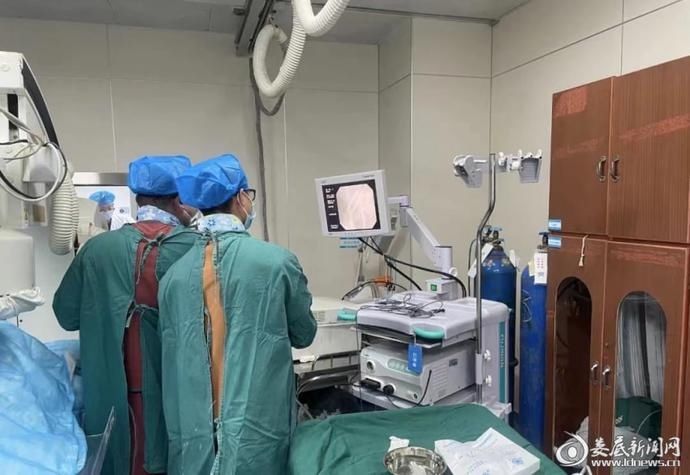
(surgery site)
Loudi News (Correspondent Li Chengbin) The General Surgery Department of Jiangshi People’s Hospital successfully carried out the first endoscopic bile duct stent placement (ERCP) in Lengshuijiang City, filling the technical gap in the city and bringing good news to local and surrounding patients.
The patient, Mr. Zeng Lao, 80 years old, underwent biliary stent placement for 5 years due to hepatolithiasis. It needs to be replaced every six months, and the bracket has been replaced 9 times. Every time you need to go to the provincial hospital for treatment. But the old man is very old, he has to travel back and forth, and he is not familiar with the place in the provincial capital, so he faces many troubles. If the problem can be solved in the hospital at home, it will be much more comfortable. With this idea in mind, Mr. Zeng contacted Liu Songjun, director of general surgery at Lengshuijiang People’s Hospital.
Liu Songjun was anxious about the patient’s urgency, thought about what the patient wanted, actively coordinated the endoscopy room, intervened in the operating room, perfected preoperative preparations, organized preoperative discussions in the department, and repeatedly scrutinized the surgical process. After completing all the preoperative preparations, the surgery also proceeded as scheduled.
During the operation, under the duodenoscope, the lens successfully reached the descending part of the duodenum, and the duodenal papilla and the original biliary stent were seen, and the stent was successfully removed. The duodenoscope was placed again, two guide wires were successfully placed from the duodenal papilla, and two biliary stents were placed in the common bile duct and the intrahepatic bile duct respectively through the guide wires. The operation went smoothly. The operation time was about 40 minutes. The vital signs during the operation were stable. Mr. Zeng felt good.
ERCP is called the jewel in the crown of advanced digestive endoscopy diagnosis and treatment by industry insiders, and it is currently recognized as the gold standard for the diagnosis of pancreaticobiliary diseases. It inserts the duodenoscope into the descending part of the duodenum through the mouth, and enters the bile duct and the pancreatic duct through the duodenal papilla for angiography and other diagnosis and treatment operations. It is mainly suitable for the diagnosis and minimally invasive treatment of common bile duct stones and bile duct obstruction, especially for patients who cannot tolerate conventional surgical treatment due to old age and infirmity. For patients with pancreatic tumors, the bile duct and the main pancreatic duct can be placed with double stents at the same time, so as to relieve the obstruction of the bile and pancreatic ducts, relieve abdominal pain, and improve the patient’s digestive function. It has the characteristics of no operation, small trauma, short operation time, fast postoperative recovery, few complications, and short hospitalization time, which avoids the pain of open surgery and is well received by patients.
Editor in charge: Liu Hengcai